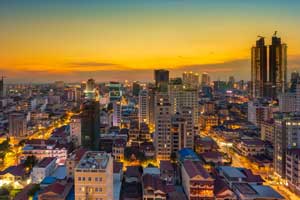Book NOW for $1 £1 €1 • Flexible Payments • No Change Fees • Private Departures Available
- Home >>
- Cambodia Travel Advice
Cambodia Travel Advice
Getting to
Cambodia
Cambodia is nestled in the heart of southeast Asia, neighbouring Thailand, Laos and Vietnam. The biggest international airport is Phnom Penh International, with Siem Reap having the second largest in the country. For international travellers, it can be cheaper to fly to Bangkok and catch a low cost carrier flight to Phnom Penh.
- A flight from London takes around 16 hours with a connecting flight in Bangkok.
- A flight from Toronto will take 22 hours with a stopover depending on your airline.
- A flight from Sydney will take around 15 hours with a stopover in either Kuala Lumpur, Hong Kong or Bangkok.
- Regional carriers also operate flights from Bangkok direct to Siem Reap International Airport.
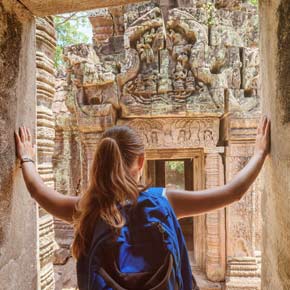
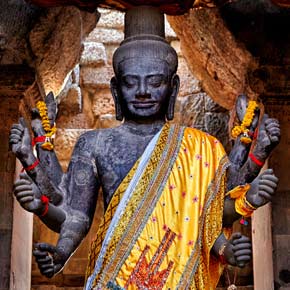
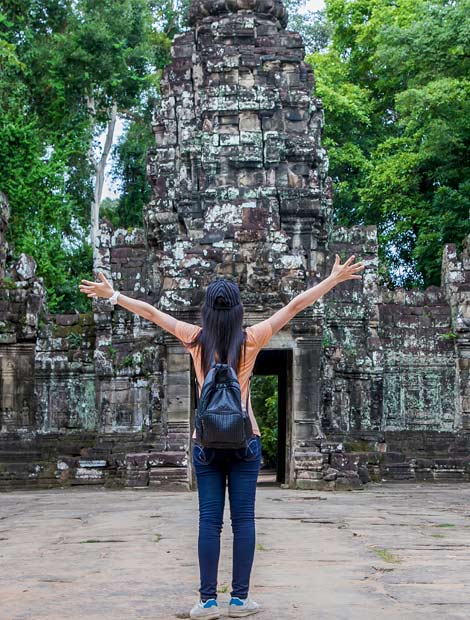
Main airport for
Cambodia
The main international airport, and the busiest in Cambodia is Phnom Penh International (PNH). It is located 12 km from the city centre.
Siem Reap International Airport is the second busiest welcoming over 1 million travellers each year arriving to see Angkor Wat. It is located a mere 8 km from Siem Reap.
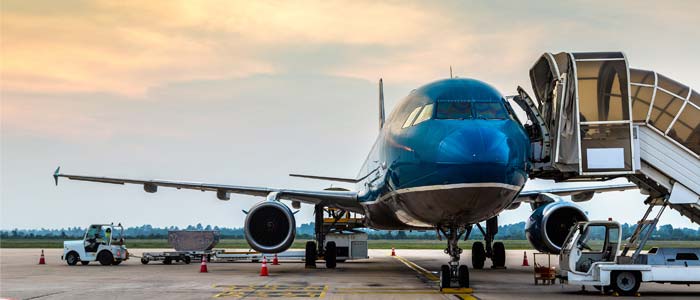
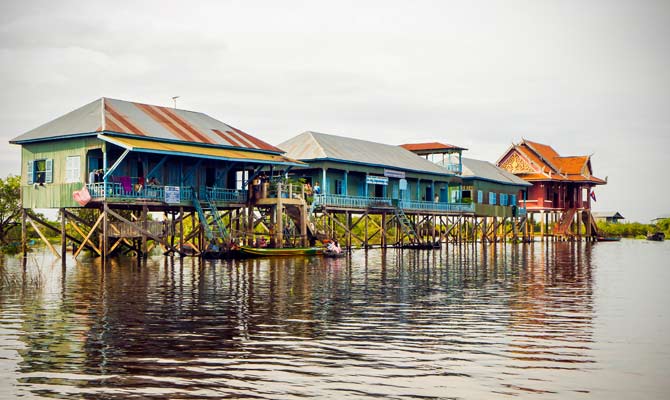
Geography and landscape
of Cambodia
Cambodia is located in the southern section of the Indochina peninsula, bordering Thailand, Laos and Vietnam. It has a land mass of 181 square kilometers, making it about half the size of Vietnam and three times smaller than Thailand. Cambodia is a relatively flat country, with rolling hills and many forested areas. The highest mountain in the country, Phnom Aural, sits at 1771 meters and is located in the eastern part of the country, while the Mekong River is one of the defining points of Cambodia, running through the entire country from north to south. Cambodia is also home to the largest lake in Southeast Asia, Tonle Sap.
Culture, Religion
and Etiquette
The official religion of Cambodia is Theravada Buddhism, with around 95% of the population following it. Minority groups include Vietnamese, Chinese, Chams and hill tribes. The Kingdom of Cambodia, it’s official name, is an elective constitutional monarchy with a head of state and a prime minister.
When visiting temples or sacred sites it is important for both men and women to dress modestly, covering shoulders and legs to at least the knee. Footwear and headwear should be removed before entering a temple. It is considered disrespectful for tourists to have tattoos of Buddha and it is therefore recommended to ensure these are covered when entering temples.
When greeting someone, or saying goodbye to someone, Cambodians will place both palms together in front of their chest and bow their head slightly. This is known as Sampeah and it is the most respectful and common way of saying hello. Sampeah is divided into five categories depending on the person who is on the receiving end and the level of respect they should receive. For friends, hands are placed at chest level. For boses, or anyone high ranking, they are placed at mouth level. The third level is for parents, grandparents and teachers, where Cambodian’s place the hands at nose level. For the king or monks, they are placed at eyebrow level and finally when praying to God or sacred figures, they are placed at their highest; forehead level.
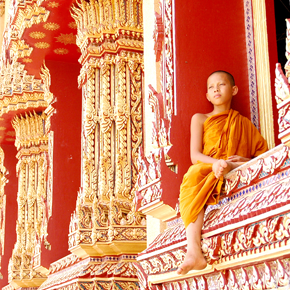
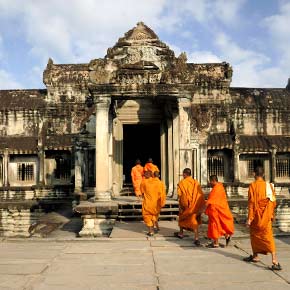
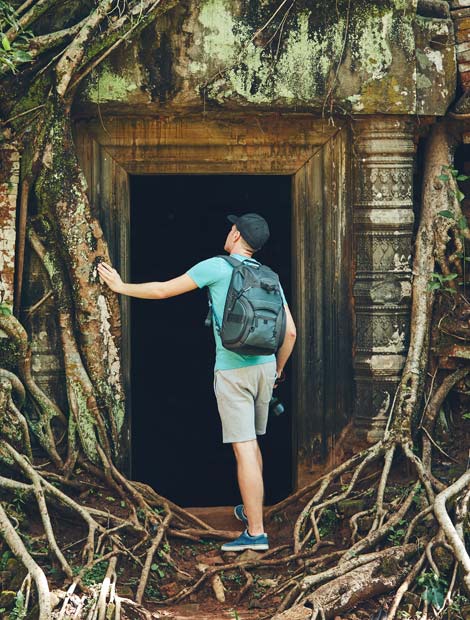
Shopping
Shopping in Cambodia consists of mainly local markets and boutique shops, especially in the larger cities like Phnom Penh. There are a few shopping malls with international brands however some of the best finds are on Street 240, located behind the Royal Palace and full of Local boutiques and cafes. Check out the Russian Market, where you can find everything from clothes, crafts, souvenirs, paintings, jewelry, silk, accessories and food stalls. The biggest in Phnom Penh, it got its name from the influx of Russian tourists it received in the 80’s. You will find local food and clothes markets throughout Cambodia and these are the cheapest and best places to shop. Some of the best items to pick up when travelling Cambodia is silver jewellery, silk clothing and scarves or hand made crafts and carvings.
Photography
Cambodia has a charming landscape with Angkor Wat by far being the most iconic and photographed site in the country. The local people are generally very friendly and happy to be photographed, but it is important to ask and also polite to share with them where they can find the photo, whether that be on social media or an email address.
Photography at border crossings or other official military postings is prohibited and may result in arrest. Should you come across demonstrations or protests, it is important to leave immediately and whatever you do, do not take photographs. This is highly prohibited and can lead to arrest if the local authorities spot you.
Be aware and respectful when photographing religious sites. If locals are in prayer, never interrupt the situation for a photograph and always double check the entrance for signs either allowing or prohibiting photography. Ensure the flash is off, as not only can it disrupt locals it can also damage murals. Selfies at certain religious sites can also be seen as disrespectful, so be aware of your surroundings and use common sense.
Languages Spoken
The official language of Cambodia is Khmer. It is the single official language and is spoken by 90% of the population. English is spoken in the hospitality industry and generally visitors will not have issues communicating. Shopkeepers or market stall vendors generally have a low level of English, and some basic hand gestures and improvisation is needed. This is all part of the fun! Travellers are recommended to learn how to say a few words; hello (jum-reap-soo-a), thank you (or-koon) and goodbye (joom-reap leah) will help you out a lot!
Capital City
Money
The official currency of Cambodia is the riel (symbol: ៛), although US dollars are freely used alongside it and most purchases can be made in either dollars or riels or a combination of the two. It is common to pay for something in US dollars and receive change in riels. US coins are not used, so riels often take the place as fractional dollar amounts. The larger a purchase, the more likely it is you will pay in US dollars. Riel coins are not commonly in circulation and riel notes come in 50, 100, 500, 1000, 2000, 5000, 10,000, 20,000, 50,000 and 100,000 denominations. Most businesses work on an exchange rate of 4000 riels to one US dollar.
It’s advisable to carry cash with you in Cambodia, at least for emergencies should there be any problems with your card. Get some notes in small denominations when you change money to help when paying for taxis, entrance fees, snacks and temple donations. Traveller’s cheques aren’t accepted in Cambodia.
Many countries have strict rules on the age and quality of foreign cash. We therefore recommend if you can buy them locally, you bring only new, unmarked and undamaged bank notes. This includes your Local Payment on tours where required.
Tipping
Tipping is not customary in Cambodia however it is polite and expected to tip local guides and drivers if you feel the service was excellent. High end or international restaurants may add on a service charge however if you stick to smaller restaurants this is not common. You should also add a tip for any spa service that you receive.
Credit Cards
Most hotels, restaurants and shopping centres accept credit cards. American Express is accepted in larger hotel chains and occasionally other establishments so it is always recommended to also travel with a universal credit card such as mastercard. Markets only ever accept cash, as do some smaller cafes and restaurants. Services such as taxis and guides will usually also only operate with cash.
ATMs and banking
ATMs are widely available in major towns and cities across Cambodia, less so in the countryside, and most (though not all) should accept international debit and credit cards such as Visa or Mastercard. For security, only use ATM machines that are attached to banks or major hotels.
Banks are usually open from 8:00 to 15:00 Monday to Friday. On Saturdays, banks usually open for the morning only from 8:00 to 11:30. All banks are closed on Sundays.
Visas
A Tourist Visa is required for most foreign nationals entering Cambodia. Tourist visas are available on arrival at Phnom Penh or Siem Reap international airports. If you do wish to get a visa on arrival you should carry a passport photo with you. A tourist visa is valid for 30 days from the day you arrive in Cambodia. A tourist visa costs around 30 USD but this can be subject to change so we advise to check the official GOV website a few weeks before you travel.
Travellers can also purchase an e-visa before arrival. This takes around 3 working days.
For visits longer than 30 days, it is essential to get a visa from the nearest Cambodian embassy before travelling to Cambodia. Allow up to six weeks for this process.
All passport holders must have a minimum of six months validity on their passports.
Is it safe to drink tap water in Cambodia?
Unfortunately it’s not safe for visitors to drink the tap water in Cambodia due to the risk of illness from water borne diseases, bugs and parasites. Bottled water is widely available in shops, hotels and restaurants and is very low in cost. Many hotels will also provide free bottled water in the rooms. Be cautious when buying bottled water off locals selling it on the street or near attractions, and make sure the cap is sealed. The use of ice can be more tricky, however most restaurants and cafes buy ice from companies and so it is safe to drink. If you are unsure always ask for your soft drink without ice. Brushing your teeth in the water is a personal choice - while it is fine for the most part if you have a sensitive stomach you should stick with bottled water.
Vaccinations and travel health
Travel health advice may vary slightly according to your country of origin. In the UK, travellers are recommended to stay up-to-date with routine vaccinations (including but not limited to) MMR (measles-mumps-rubella), and diphtheria-tetanus-polio vaccine.
Most travellers are recommended to have tetanus, typhoid and hepatitis A vaccinations for visits to Cambodia. Some travellers may be recommended to have vaccinations for hepatitis B, Japanese Encephalitis, rabies, and tuberculosis. You may need proof of having had a yellow fever vaccine if you’re arriving from or have recently travelled to a country with a risk of yellow fever.
Take precautions to avoid mosquito bites throughout the day, from dawn to dusk, as there are some mosquito-borne diseases such as dengue present in Cambodia which cannot be prevented by vaccines. If you do develop flu like symptoms while travelling Cambodia, visit a doctor who may refer you for a blood test if they suspect Dengue Fever.
We recommend that you speak to your GP or local travel health expert for country specific, professional medical advice, ideally 4 to 6 weeks before you travel. See the CDC’s travel advice or Public Health England’s travel advice for further information.
Electricity and Plugs in Cambodia
Electricity in Cambodia runs on 230 volts at 50Hz. In general, type A, C and G plugs will fit into most Cambodia power outlets. In general they use a European plug with two circular metal pins but in some rare cases it is also possible to find a flat two pronged socket as used in North America or a 3-pin India-style socket, so it is best to take a universal adaptor and cover your bases.
Emergency calls
Save these numbers on your phone in case of emergency. It should be noted that most people working for the below Cambodian services will not speak English therefore it is best to ask your guide, or hotel staff to assist with translation.
- Police: 023 366 841 (or 117)
- Fire and rescue: 023 723 555 (or 118)
- Ambulance: 023 724 891 (or 119)
- Tourist Police Phnom Penh: 012 942 484
- Tourist Police Siem Reap: 012 402 424
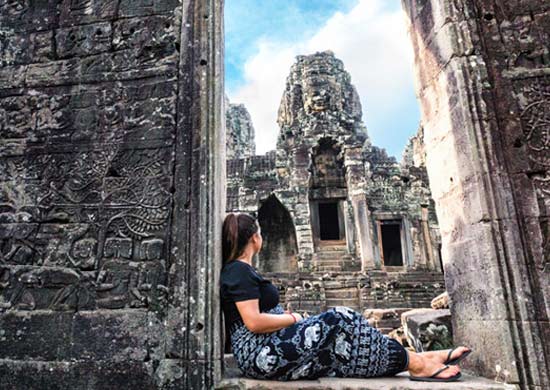
Travelling as a single woman
Cambodia is generally a very friendly, safe and welcoming destination for tourists. The vast majority of locals are kind, generous, helpful and accommodating, and most solo female travellers have a great time here. It is good practise to be cautious in big cities and crowded areas and always keep your valuables in a bag with a zip, carrying it on your front. Petty theft is common in any major city and Phnom Penh is no exception.
If you’re heading out at night, it’s a good idea to dress modestly and travel with others. Let your hotel and/or Tucan Travel tour leader know where you’re going and take a licensed taxi that has been recommended and booked by your hotel. It’s not advisable to take an unknown taxi alone late at night. In any case, change to a different one if you’re concerned about the driver or the standard of driving.
Group tours provide an opportunity to make new friends travelling on a common itinerary - for instance, 60% of Tucan Travel tours are made up of solo travellers enjoying the company of like-minded adventurers.
Wifi and internet access
Wifi is available at most hotels and guesthouses in Cambodia, although rarely in homestays. Mobile data is fairly quick in larger towns and all cities (around 3G) however this can be very costly so check your payment plan before switching on data roaming. Free public wifi is common in many cafes and restaurants and this is usually advertised by the entrance. It is fairly simple to pop into a cafe for a coffee just to use the wifi.
Time Zone
Phnom Penh, Cambodia
Cambodia (IST) is 7 hours ahead of London (GMT/UTC), 4 hours ahead of Sydney and 12 hours ahead of Toronto.
Cambodia does not have a daylight saving time clock change, as it observes Indochina Time. Visit timeanddate.com to calculate the time difference for your location.
Getting around Cambodia
Cambodia has a decent amount of infrastructure to make travelling around the country easy. Buses are the most common option but flying and private transfers are also possible.

Bus
Getting around Cambodia by bus is relatively easy and a cheap way of travelling. Services run from the major cities of Phnom Penh and Siem Reap to other towns across the country and prices can start from as little as a few dollars. Buses between Phnom Penh and Siem Reap tend to be more modern and often air conditioned, but if you wish to explore more off the beaten track towns you should expect more basic service. In the dry season spaces can fill up fast so it is recommended to book your ticket in advance or at least the day before you travel.

Rail
Rail travel is not as common in Cambodia with certain routes having opened only in recent years. Cambodia only has one domestic train service which runs every other day, therefore it is not most travellers first choice of transport! The current train services only runs from Phnom Penh - Battambang - Poipet, and Phnom Penh to Sihanoukville.

Air
Domestic flights offer a quick and easy way to travel around the country and reach neighbouring countries. The most popular route is between Phnom Penh and Siem Reap, but it is also possible to fly to Sihanoukville. There are regular flights between Phnom Penh and other major cities such as Bangkok or Hanoi, making it easy to travel between these countries. The major airlines are Bassaka Air, Cambodia Angkor Air, Cambodia Bayon Airlines and Sky Angkor Airlines.

Bicycle
For those who enjoy cycling, Cambodia is a fantastic place to explore since the landscape is relatively flat and easy to navigate. Many of the countryside towns offer lovely cycling routes where you can explore villages and fields. Hotels and guesthouses often rent out bicycles for a few dollars a day. It is recommended to test the breaks before you set off.

Boat
It is possible to travel certain areas by boat thanks to the vast Mekong River that snakes through the country. There are scenic boat trips between Siem Reap and Battambang, and Phnom Penh and Siem Reap. While it can be a fun experience, the journey tends to be longer than on the bus and the scenery can get repetitive.

Private Driver
There are various local companies who will offer private cars for day trips, you can often find information in the hotel reception or on Tripadvisor. Always check recent reviews and compare prices.
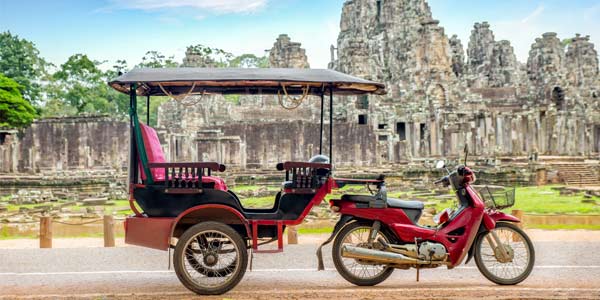
Taxis, motorbikes and tuk-tuks
Taxis are common in all towns and cities and you will have no problem finding them waiting outside airports and train stations. Always ensure you have your accommodation address written (preferably in English and Khmer) as most taxi drivers speak limited English.
Tuk-tuks are very common in Cambodia and you will find them in all towns and cities. They do not have meters so it is essential that you agree on a fixed price before the trip.
Taxi drivers and tuk-tuk drivers are often willing to work for a fixed, pre-agreed fee (plus tip) as full-day chauffeurs, so it’s worthwhile asking your hotel for a referral if you’re short on time to visit the city sights, or you’re planning your own day trip. Be prepared to insist on following your own itinerary - drivers may try to stop over at shops or restaurants where they receive commission.
History
From around the 1st century AD Cambodia was part of the Funan kingdom, which covered parts of Thailand, Cambodia and southern Vietnam, in an area populated by the Khmer, a dark-skinned, curly-haired people from whom most modern-day Cambodians are descended. It was the first important Hindu kingdom in Southeast Asia and drew many cultural influences from India with whom it had trade relations. It also traded with China and much of what is known of the state comes from accounts by Chinese traders and envoys.
During the 6th century, Chenla, which was previously a northern dependency of Funan, broke away and gained its independence forming a central state which was broken up into at least two kingdoms - 'water Chenla' and 'land Cenla'. There is little recorded of this time in Cambodia's history and even the word Chenla comes from contemporary Chinese sources.
In the late 8th century, Jayavarman II arrived from Java claiming to be a Cambodian prince descended from Funan lines. He declared himself ruler and established the kingdom of Kambujadesa, a strong, self-aware kingdom which would endure and expand, marking the start of the Khmer Empire and the rule of Angkorian kings. Khmer kings followed the Hindu religion and believed one of their key duties was to build temples for the gods. Temples built by a king were rarely reused by the next, so as a result the country's most famous temples are from this period, including Angkor Wat which is still the largest religious structure in the world and was dedicated to the Hindu god Vishnu.
The Khmer Empire began to fragment and decline from the 11th century and by the 13th century the Thais had removed the Khmers from Sukhothai and Lopburi had claimed its independence, as had the Cham, greatly reducing the kingdom's territory.
The 16th century saw the arrival of the first Western explorers, with Spanish and Portuguese visiting from the Philippines and Malacca. As the Vietnamese took control of the Mekong Delta in the south and the Thais expanded their territory in the west, Cambodia found itself sandwiched between two powerful neighbours, splitting the royal family into pro-Vietnamese and pro-Cambodian factions. The political to and fro-ing and invasions from both sides eventually led to Cambodia asking France for protection. A treaty with the French was signed in 1863 affording Cambodia protection in exchange for mining and timber rights and the right to preach Christianity. Corruption and rebellion allowed the encroachment of French control over the country and by the early 20th century France was ruling Cambodia.
World War II saw the Japanese occupy Cambodia, who allowed the French to continue their administrative control. After the war ended the French re-established control until left-wing guerilla movement Khmer Issarak rebelled against the French between 1947 and 1950. Following several significant political developments, full independence was eventually won on November 09, 1953 and Cambodia's leader Sihanouk was touted a national hero.
During the conflict between north and south Vietnam in the 1960s and 70s, Sihanouk allowed the north Vietnamese to send troops and arms via Cambodia to the Viet Cong in the south. Throughout the conflict the US dropped over half a million tonnes of ordinance on Cambodia in a series of covert bomb raids.
In the northeast the Khmer Rouge gained popularity and gradually took control of the country, finally arriving in Phnom Penh on April 17, 1975. During their three and a half years in power the Khmer Rouge relocated large swathes of the population to the countryside from cities to achieve their aim of an agrarian society of peasants. They began a campaign of mass executions, killing anyone linked to old ideas, political structures or academia. Even wearing glasses or speaking a foreign language was enough to condemn you. They killed an estimated two million people, around a fifth of the population.
The Khmer Rouge were stopped by the Vietnamese, who invaded Cambodia in 1978 after the Khmer Rouge massacred Vietnamese villages along the border, taking Phnom Penh in just 17 days. They formed an interim government and restored many basic freedoms including schools and private farming. They withdrew from Cambodia in 1989. The UN created the United Nations Transitional Authority in Cambodia (UNTAC) to stabilise the country and oversee elections which were held in 1993. Sihanouk's son Prince Ranariddh's party, FUNCINPEC, won the election but the existing interim government led by ex Khmer Rouge commander Hun Sen refused to cede leadership. Initially the two leaders shared power and Cambodia had two prime ministers until eventually Prince Ranariddh was ousted by Hun Sen who remains in power (2014) and is one of the longest server leaders in the world.



